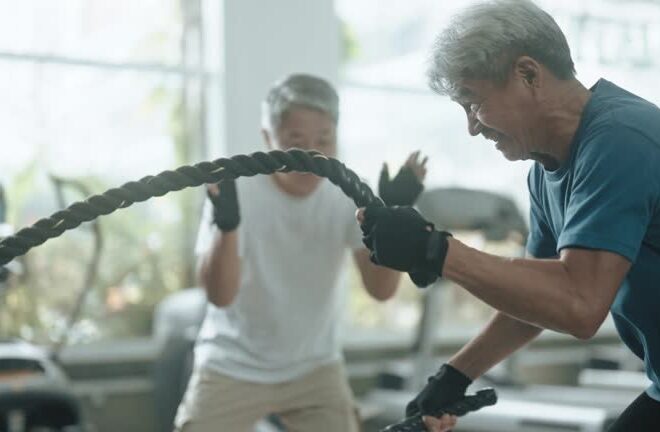
Advanced Strategies for HIIT Workouts with Real Results
High-Intensity Interval Training (HIIT) has rapidly become one of the most popular and effective forms of exercise for those seeking to improve cardiovascular health, burn fat, and build muscle. The promise of rapid results, coupled with the convenience of shorter workout durations, has made HIIT a go-to choice for many fitness enthusiasts. However, as with any exercise routine, those looking to break through plateaus or achieve more substantial gains must refine their approach. Advanced HIIT strategies can not only elevate the intensity but also yield even more significant results. Whether you are a seasoned athlete or a dedicated gym-goer looking for new challenges, these advanced techniques can take your HIIT workouts to the next level.
1. Incorporating Tabata Training for Maximum Intensity
Tabata is a highly effective form of HIIT that was originally developed by Japanese researcher Dr. Izumi Tabata. This method consists of short, intense bursts of exercise followed by brief rest periods. A typical Tabata session involves 20 seconds of all-out effort followed by 10 seconds of rest, repeated for eight rounds, lasting just four minutes.
How to Apply It:
-
Choose a high-intensity exercise like burpees, squat jumps, or kettlebell swings.
-
Perform the exercise as hard as you can for 20 seconds.
-
Rest for 10 seconds.
-
Repeat for eight rounds.
Why It Works:
Tabata is designed to push your body to its limits, forcing you to work at maximum intensity. This can lead to improved aerobic and anaerobic capacity, increased calorie burn, and better overall endurance. By incorporating Tabata intervals into your HIIT sessions, you can dramatically boost your workout intensity in a shorter amount of time.
2. Pyramid Training for Progressive Overload
Pyramid training is a strategic approach that involves progressively increasing and decreasing the intensity of your workouts in a structured manner. In the context of HIIT, pyramid training can involve either time or repetitions. The goal is to push your body past its comfort zone by gradually increasing intensity, then tapering off, providing both a challenge and a recovery phase.
How to Apply It:
-
Begin with 30 seconds of high-intensity work followed by 15 seconds of rest.
-
For the second set, increase the work period to 45 seconds, maintaining the same rest period.
-
Continue increasing until you reach 60 seconds of work, then reverse the process by reducing the work time in subsequent sets.
Why It Works:
Pyramid training effectively stimulates muscle growth and cardiovascular endurance by applying the principle of progressive overload. It keeps the body guessing, which prevents adaptation, a key factor in continuous improvement. This strategy also allows for bursts of maximal effort, followed by a brief respite, ensuring you maintain a high level of intensity throughout your workout.
3. Supersets to Maximize Muscle Fatigue
Superset training involves performing two exercises back-to-back with minimal or no rest in between. When used in a HIIT workout, supersets can be an excellent way to build strength while maintaining high intensity. There are two primary types of supersets:
-
Antagonistic supersets: Pairing exercises that target opposing muscle groups, such as push-ups and pull-ups or squats and lunges.
-
Compound supersets: Pairing two exercises that target the same muscle group, like squats and deadlifts or bicep curls and triceps dips.
How to Apply It:
-
Choose two exercises targeting the same or opposing muscle groups.
-
Perform one exercise for the prescribed number of reps.
-
Immediately follow with the second exercise, with minimal rest between.
Why It Works:
Supersets are designed to increase the time under tension and muscle fatigue, stimulating muscle growth while keeping the heart rate elevated. By reducing rest time, supersets force your body to work harder and maintain a high intensity throughout the workout, which increases the calorie burn and efficiency of the HIIT session.
4. Active Rest Periods to Keep the Heart Rate Elevated
Traditional HIIT protocols typically include short periods of rest between each exercise, often allowing your heart rate to drop significantly. However, a powerful strategy to improve both cardiovascular fitness and endurance is replacing these rest periods with active recovery. Instead of resting completely, you engage in low-intensity movements to keep the heart rate elevated.
How to Apply It:
-
After completing a set of high-intensity exercises, instead of resting completely, perform a low-impact exercise such as jogging in place, walking lunges, or bodyweight squats.
-
Maintain a moderate pace during your active rest to allow your muscles to recover slightly while still working to keep the heart rate up.
Why It Works:
Active rest periods improve your cardiovascular fitness by promoting fat burning and enhancing overall endurance. By never allowing your heart rate to drop too much, your body remains in a fat-burning state, even during the recovery periods. This strategy also helps mimic real-life movements and improves stamina, which can carry over to other physical activities or sports.
5. Circuit Training with Compound Movements
Circuit training involves performing a series of exercises in succession, typically targeting different muscle groups, with minimal rest in between. When combined with compound movements, which engage multiple joints and muscle groups, circuits become a powerful way to maximize efficiency in your HIIT workouts.
How to Apply It:
-
Choose four to six compound exercises that target different muscle groups. For example, squats, push-ups, kettlebell swings, and mountain climbers.
-
Perform one set of each exercise with minimal rest in between.
-
Once all exercises are completed, rest for a minute or two before repeating the circuit.
Why It Works:
Circuit training with compound movements can help you develop both strength and cardiovascular endurance simultaneously. By involving multiple muscle groups in each exercise, you increase the overall intensity of the workout, allowing you to burn more calories and build muscle simultaneously. The variety of movements also prevents workout monotony and ensures balanced muscle development.
6. Increase Work-to-Rest Ratios for Increased Intensity
Another advanced strategy to push your HIIT workouts further is to manipulate the work-to-rest ratio. The traditional 1:1 or 2:1 ratio (e.g., 30 seconds of work, 30 seconds of rest) can be adjusted to increase the intensity, forcing your body to adapt and progress.
How to Apply It:
-
For an advanced HIIT session, increase the work time to 45 seconds or even 60 seconds, and reduce the rest period to 15 seconds.
-
Perform exercises that are compound or high-intensity in nature to ensure maximum exertion during the work phase.
Why It Works:
By increasing the duration of the work phase and reducing rest periods, you force your body to exert more energy in a shorter period. This not only enhances cardiovascular endurance but also maximizes fat loss. Your body is pushed beyond its normal capacity, leading to greater adaptation and faster progress.
7. Progressive Resistance in HIIT Workouts
Incorporating resistance into HIIT workouts, whether through weights, bands, or other forms of resistance training, adds another layer of intensity and can help prevent plateaus. Progressive resistance ensures that your muscles continue to grow stronger over time by increasing the load.
How to Apply It:
-
Start with a bodyweight exercise, such as squats or push-ups, and gradually add resistance (dumbbells, kettlebells, or resistance bands) as you get stronger.
-
Increase the resistance gradually to ensure that your muscles are continually challenged.
Why It Works:
Adding resistance training to HIIT workouts stimulates muscle growth and strength development while maintaining the metabolic benefits of high-intensity training. Over time, progressive resistance increases both the strength and endurance of the muscles, ensuring long-term fitness gains.
8. Hybrid HIIT and Endurance Training
Incorporating endurance training with your HIIT sessions is a great way to diversify your workouts and build stamina. Combining the explosive power of HIIT with the long-term effort required for endurance activities (like running, cycling, or rowing) challenges your aerobic and anaerobic systems.
How to Apply It:
-
Alternate between high-intensity intervals (such as sprinting or kettlebell swings) and low-intensity endurance activities like jogging or cycling for longer periods.
-
Focus on alternating between anaerobic bursts and aerobic recovery periods.
Why It Works:
This hybrid approach trains both systems, improving not just overall strength and fat burning but also endurance. It ensures that you build stamina while maintaining the explosive power typically associated with HIIT.
Conclusion
While HIIT is already an effective and efficient workout method, integrating advanced strategies can lead to even more significant gains in fitness, strength, and endurance. Techniques such as Tabata, pyramid training, supersets, active rest, and incorporating progressive resistance can transform your typical HIIT routine into an unparalleled workout challenge. By refining your approach and continually pushing your limits, you can ensure that your workouts remain effective, exciting, and—most importantly—yield real results. Whether you’re aiming to shed fat, build muscle, or enhance cardiovascular health, these advanced strategies will help you break through plateaus and achieve new fitness milestones.



